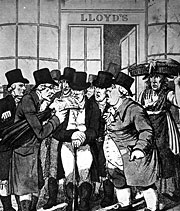You wake up and start your morning routine. You go to your kitchen, select your favourite fresh arabica coffee blend, grind the beans with your burr grinder set for drip brewing method, pour the ground coffee in a disposable paper filter, fill your drip coffee machine with the right amount of fresh filtered water and press the “on” button and continue your morning routine while enjoying the aroma and fragrance of coffee brewing…
While you have made no major faux pas in preparing your favourite brew (after all, you’ve perfected your technique to a “t”), you are missing out on some of the flavours. Why? Your disposable paper filter is the culprit.
What’s wrong with paper filters?
Let’s start with one obvious reason. Disposing of your paper filter after every use is not very ecological. Of course, in this era of recycling and composting, companies have improved the material used to produce coffee filters. But in the end, you are still disposing of your filter after each use.
Secondly, there is controversy regarding the dioxin and chlorine used in making the white “bleached” paper coffee filters (Reference #1). There does not seem to be a clear consensus on the amount of these compounds leaching from the paper filters and their level of toxicity. However, the fact that the bleached (white) coffee filters may have these compounds could be a concern. There is also the “unbleached” paper coffee filters that claim to be a healthier choice.
And last but not least, the finely dense filament that makes paper filters is such that it does not only retain coffee grinds during the brewing process, but it also absorbs the oils that provide the distinct flavour characteristics of the coffee blend(s) that you purchased.
Therefore, aside from their potential health and ecological impacts, paper coffee filters may also negatively impact on the flavour of your daily brew.
An alternate option: Gold-plated reusable coffee filters
Gold-plated coffee filters offer a great alternative to paper coffee filters. First of all, they are re-usable for years and years and are therefore ecologically friendly. Also, given that gold is chemically inert (it does not rust, it has no taste and it does not leach), gold-plated coffee filters is a great alternative to paper filters.
But the greatest benefit of gold-plated coffee filters is that they let most of the coffee’s oils and antioxidant compounds seep through during the brewing process, resulting in a more flavourful and distinctive cup of java. However, there are conflicting reports related to these oils. Although some reports claim that some of these oils, especially “cafestol” and “kahweol”, may contribute to elevated Low-Density Lipoprotein (LDL) cholesterol (Reference #2), others seem to indicate that these same oils may help in preventing cancer (Reference #3).
In the end, as any other pleasures in life, moderation is the golden rule (pardon the pun). Unless you are on a strict low-LDL cholesterol diet, you may want to opt for a reusable gold-plated filter and fully enjoy the true flavours of your favorite coffee while helping the environment…
References:
1. http://www.livestrong.com/article/281062-health-effects-of-gold-coffee-filters/
2. http://www.nbcnews.com/id/6242467/ns/health-heart_health/t/coffee-cholesterol/#.V7ipHmVlmRs
3. http://coffeeandhealth.org/all-about-coffee/compounds-in-coffee/

 ovide information regarding shipping arrival dates (and I’m not talking about FedEx or UPS types of shipping, but actual ships carrying cargo…) to his patrons. The accuracy of the information he was able to gather on maritime movements allowed him to provide “maritime insurance” to his coffee house customers. This led to the creation of “Lloyd’s”, one of the oldest and most successful specialty insurance provider in the world… If you want to know more on how a coffee house became an insurance powerhouse, I’d suggest the following sites:
ovide information regarding shipping arrival dates (and I’m not talking about FedEx or UPS types of shipping, but actual ships carrying cargo…) to his patrons. The accuracy of the information he was able to gather on maritime movements allowed him to provide “maritime insurance” to his coffee house customers. This led to the creation of “Lloyd’s”, one of the oldest and most successful specialty insurance provider in the world… If you want to know more on how a coffee house became an insurance powerhouse, I’d suggest the following sites: